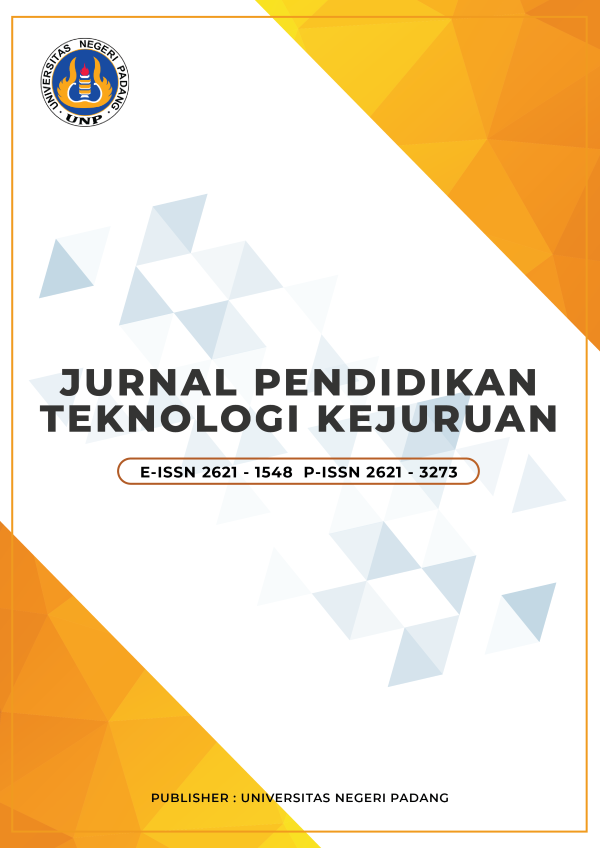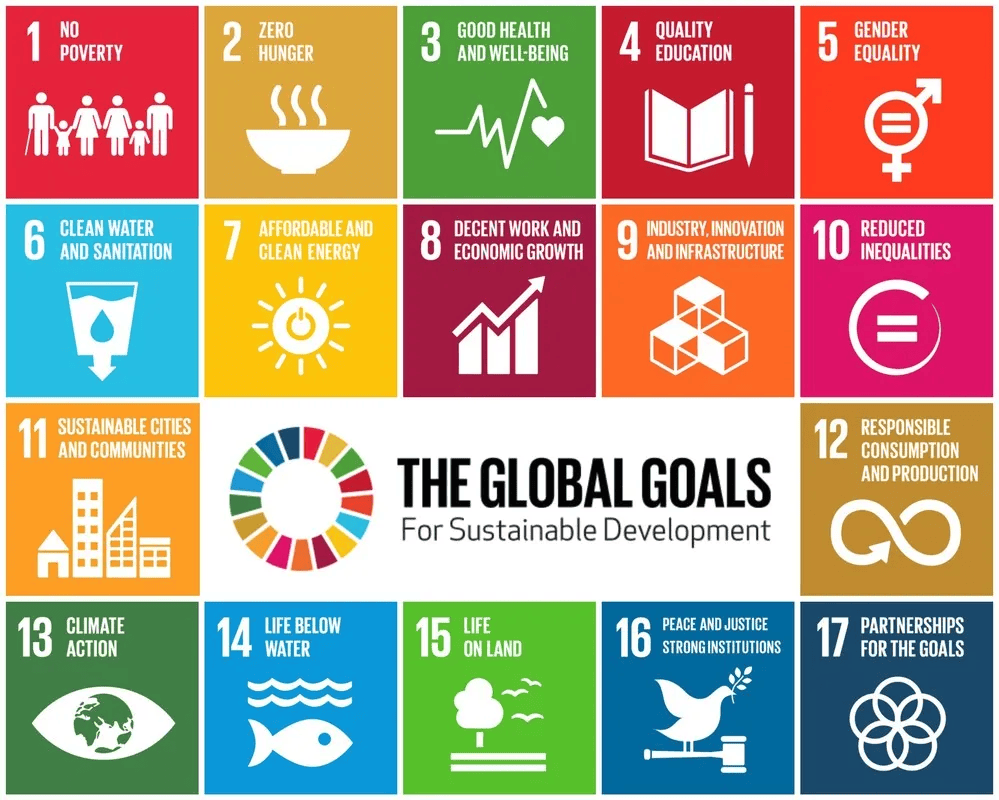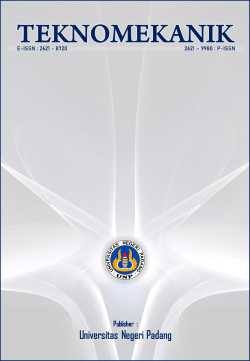Enhancing STEM education through peeragogy: Exploring the impact of demographics factor
DOI:
https://doi.org/10.24036/jptk.v7i3.38423Keywords:
Peeragogy, Vocational education, Quality education, STEM gender, Socioeconomic Status (SES)Abstract
Despite the growing recognition of the peeragogy learning approach, which emphasizes students' active participation and responsibility in their learning, there is still a gap in understanding how demographic factors influence its effectiveness in Science, Technology, Engineering and Mathematics (STEM) education. While pedagogy aims to harness the individual potential to promote independence, collaboration, and deep understanding, few studies have been conducted on how different demographic factors impact the success of this approach. This study aims to identify the trends in the peeragogy learning approach among students for STEM subjects in the Upper Secondary Vocational Program (PVMA) stream based on demographic factors such as gender, STEM subjects, and socioeconomic status (SES). The design of this study is survey research that employs a quantitative approach, and a modified set of questionnaires derived from past studies was used as the research instrument. A total of 158 students enrolled in STEM subjects under the PVMA stream at secondary schools were randomly selected as the study samples. The results indicate that most students in STEM subjects under the PVMA stream prefer a goal-oriented peeragogy learning approach, a consistent trend across both genders. Socioeconomic status also plays a role, with students from varying household income levels generally preferring the self-directed peeragogy learning approach. Different STEM subjects and SES affect PVMA students' choice of peeragogy learning approaches. In conclusion, educational institutions can improve the effectiveness of peeragogy in STEM education for PVMA students by promoting equitable learning opportunities for different SES and developing peeragogy strategies based on different STEM subjects.
Downloads
References
Amiruddin, A., Baharuddin, F. R., Takbir, T., Setialaksana, W., & Nurlaela, N. (2023). Andragogy, Peeragogy, Heutagogy and Cybergogy Contribution on Self-Regulated Learning: A Structural Equation Model Approach. International Journal of Instruction, 16(3), 551–572. https://doi.org/10.29333/iji.2023.16330a
Bakhmat, N., Krasnoshchok, I., Chovhaniuk, O., Shcherbakova, N., & Gevko, O. (2023). Theoretical and Methodological Analysis of the Formation of “Soft-skills” in Higher Education Students of Pedagogical Specialties of Higher Education Institutions of Ukraine. Journal of Curriculum and Teaching, 12(5), 134. https://doi.org/10.5430/jct.v12n5p134
Beukman, P. C. (2021). A pedagogical framework for the adoption of Technology Enhanced Active Learning (TEAL) with the consideration of learning spaces in a Higher Education context [University of Portsmouth]. https://pure.port.ac.uk/ws/portalfiles/portal/51340311/UP863522_EdD_thesis_updated_FINAL.pdf
Bond, T. G., Yan, Z., & Heene, M. (2020). Applying the rasch model: Fundamental measurement in the human sciences. In Applying the Rasch Model: Fundamental Measurement in the Human Sciences. https://doi.org/10.4324/9780429030499
Burt, B. A., Stone, B. D., Motshubi, R., & Baber, L. D. (2023). STEM validation among underrepresented students: Leveraging insights from a STEM diversity program to broaden participation. Journal of Diversity in Higher Education, 16(1), 53–65. https://doi.org/10.1037/dhe0000300
Daud, A. H., Ismail, Z., Mutalib, A. A., & Man, S. I. C. (2024). Effectiveness of Atvet Towards Employment Rates, Wages Rates and Mastery of Practical Skills of Alumni Students from Kolej Vokasional Teluk Intan. Asian Journal of Vocational Education and Humanities, 5(1), 49–57. https://doi.org/https://doi.org/10.53797/ajvah.v5i1.7.2024
Davidi, E. I. N., Sennen, E., & Supardi, K. (2021). Integrasi Pendekatan STEM (Science, Technology, Enggeenering and Mathematic) Untuk Peningkatan Keterampilan Berpikir Kritis Siswa Sekolah Dasar [Integrating a STEM (Science, Technology, Enggeenering and Mathematics) approach to improving critical thinking skills in primary school students]. Scholaria: Jurnal Pendidikan Dan Kebudayaan, 11(1), 11–22. https://doi.org/10.24246/j.js.2021.v11.i1.p11-22
Eden, C. A., Chisom, O. N., & Adeniyi, I. S. (2024). Promoting digital literacy and social equity in education: Lessons from successful initiatives. International Journal of Management & Entrepreneurship Research, 6(3), 687–696. https://doi.org/10.51594/ijmer.v6i3.880
Gomez-Ruiz, L., & Sánchez-Expósito, M. J. (2020). The Impact of Team Identity and Gender on Free-Riding Responses to Fear and Cooperation Sustainability. Sustainability, 12(19), 8175. https://doi.org/10.3390/su12198175
Green-weir, R. R., Anderson, D., & Carpenter, R. (2021). Impact of instructional practices on soft-skill competencies. Research in Higher Education Journal, 40, 1–20. https://www.aabri.com/manuscripts/213354.pdf
Gumartifa, A., Syahri, I., Siroj, R. A., Nurrahmi, M., & Yusof, N. (2023). Perception of Teachers Regarding Problem-Based Learning and Traditional Method in the Classroom Learning Innovation Process. Indonesian Journal on Learning and Advanced Education (IJOLAE), 5(2), 151–166. https://doi.org/10.23917/ijolae.v5i2.20714
Herpi, A. N., Susilo, A., & Saridewi, N. (2024). Impact of Using Macromedia Flash-Based Audio-Visual Learning Media on Student Motivation to Learn About The Concept of Enthalpy Change. Jurnal Edusci, 1(6), 295–306. https://doi.org/10.62885/edusci.v6i1.386
Hersperger, A. M., Bürgi, M., Wende, W., Bacău, S., & Grădinaru, S. R. (2020). Does landscape play a role in strategic spatial planning of European urban regions? Landscape and Urban Planning, 194, 103702. https://doi.org/10.1016/j.landurbplan.2019.103702
Karnan, K., & Marimuthu, K. (2021). Gaya kepimpinan kolaboratif pengetua dan tahap kepuasan kerja guru sekolah menengah kebangsaan [Principal collaborative leadership style and level of job satisfaction of national secondary school teachers]. Muallim Journal of Social Science and Humanities, 5(2), 191–207. https://doi.org/10.33306/mjssh/133
Khalil, N., & Osman, K. (2017). STEM-21CS Module: Fostering 21st Century Skills through Integrated STEM. K-12 STEM Education, 3(3), 225–233. https://www.learntechlib.org/p/209552/
Khoshnodifar, Z., Abbasi, E., Farhadian, H., Sadighi, H., Pouratashi, M., & Alambaigi, A. (2020). Teamwork behavior in relation to teacher, student, curriculum, and learning environment in iranian agricultural higher education system. In Journal of Agricultural Science and Technology (Vol. 22, Issue 6). https://doi.org/http://dorl.net/dor/20.1001.1.16807073.2020.22.6.11.7
Kimmel, S. (2024). AI Facilitated Critical Thinking in an Undergraduate Project Based Service-Learning Course. Journal of Behavioral and Applied Management, 24(2). https://doi.org/10.21818/001c.122149
Kizito, N., & Telephore, H. H. (2019). Study Practice Lessons and Peer Learning Methods to Strengthen Rwandan Science and Mathematics Teaching. Lwati: A Journal of Contemporary Research, 16(2), 18–25. https://www.ajol.info/index.php/lwati/article/view/185980
Krejcie, R. V., & Morgan, D. W. (1970). Determining Sample Size for Research Activities. Educational and Psychological Measurement, 30(3), 607–610. https://doi.org/10.1177/001316447003000308
Li, J., & Pilz, M. (2023). International transfer of vocational education and training: a literature review. Journal of Vocational Education & Training, 75(2), 185–218. https://doi.org/10.1080/13636820.2020.1847566
Mamat, N., & Abdul Wahab, M. N. (2022). Kajian Masalah Pembelajaran Matematik di kalangan Pelajar Sekolah Rendah Luar Bandar [A study of mathematics learning problems among primary school pupils in the rural area]. Malaysian Journal of Social Sciences and Humanities (MJSSH), 7(6), e001531. https://doi.org/10.47405/mjssh.v7i6.1531
Marín, V. I., de Benito, B., & Darder, A. (2020). Technology-Enhanced Learning for Student Agency in Higher Education: a Systematic Literature Review. Interaction Design and Architecture(s), 45, 15–49. https://doi.org/10.55612/s-5002-045-001
Mohamad, M. M., Tee, T. K., Yee, M. H., Rozali, M. Z., & Matore, M. E. M. (2022). Survey on the Approach of Paragogy in TVET Learning. LY2022J02319.
Mora, H., Signes-Pont, M. T., Fuster-Guilló, A., & Pertegal-Felices, M. L. (2020). A collaborative working model for enhancing the learning process of science & engineering students. Computers in Human Behavior, 103, 140–150. https://doi.org/10.1016/j.chb.2019.09.008
Morgan, A. C., LaBerge, N., Larremore, D. B., Galesic, M., Brand, J. E., & Clauset, A. (2022). Socioeconomic roots of academic faculty. Nature Human Behaviour, 6(12), 1625–1633. https://doi.org/10.1038/s41562-022-01425-4
Muhammad, S., & Noor Ibrahim, N. (2021). Readiness of STEM Teachers to Implement STEM Education in Coastal Schools. International Online Journal of Language, Communication, and Humanities, 6(1), 52–70. http://insaniah.umk.edu.my/journal/index.php/insaniah/article/view/215
Oliveira, M. S. da S., Unsain, R. A. F., Sato, P. de M., Ulian, M. D., Scagliusi, F. B., & Cardoso, M. A. (2022). “Because I saw my mother cooking”: the sociocultural process of learning and teaching domestic culinary skills of the Western Brazilian Amazonian women. Food and Foodways, 30(4), 310–330. https://doi.org/10.1080/07409710.2022.2124730
Omar, M. K., Rauf, M. A., Ismail, N., Rashid, A. M., Puad, H. M., & Zakaria, A. (2020). Factors on Deciding TVET For First Choice Educational Journey Among Pre-Secondary School Student. European Journal of Molecular & Clinical Medicine, 7(3), 609–627. https://ejmcm.com/uploads/paper/61049a5f41ed55a1eec67eb5c5ef40e8.pdf
Paurine, A., Maidment, G., Rodway, M., & Yebiyo, M. (2021). Understanding the market need for skills in alternative refrigerants with low global warming potential in the EU region – A comprehensive survey on Refrigerant Emissions And Leakage (REAL) alternatives programme. International Journal of Refrigeration, 122, 11–20. https://doi.org/10.1016/j.ijrefrig.2020.11.014
Prasetya, E. P., Nuraeni, N., & Shabir, M. (2022). Teachers’ perception of peeragogy in online learning during the covid-19 pandemic (A digital ethnography research). Journal of English Educational Study (JEES), 5(2), 141–151. https://doi.org/10.31932/jees.v5i2.1781
Prayag, G., Gannon, M. J., Muskat, B., & Taheri, B. (2020). A serious leisure perspective of culinary tourism co-creation: the influence of prior knowledge, physical environment and service quality. International Journal of Contemporary Hospitality Management, ahead-of-print(ahead-of-print). https://doi.org/10.1108/IJCHM-10-2019-0897
Purwantini, E. R., Setiyadi, D., & Wuryantoro, A. (2022). Tutor Sebaya Dalam Penerapan Integrated Curriculum Bagi Siswa Kelas V SDN Banjaransari 2 Kecamatan Ngawi Kabupaten Ngawi [Peer Tutor in the implementation of Integrated Curriculum for Grade V students of SDN Banjaransari 2, Ngawi District, Ngawi Regency]. Wewarah: Jurnal Pendidikan Multidisipliner, 1(2). https://doi.org/10.25273/wjpm.v1i2.12711
Rafiola, R. H., Setyosari, P., Radjah, C. L., & Ramli, M. (2020). The Effect of Learning Motivation, Self-Efficacy, and Blended Learning on Students’ Achievement in The Industrial Revolution 4.0. International Journal of Emerging Technologies in Learning (IJET), 15(08), 71. https://doi.org/10.3991/ijet.v15i08.12525
Ramesh, T. T., Raghavendra, R., Vantamuri, S. B., Pallavi, R., & Easwaran, B. (2023). Improving The Quality of Vanet Communication Using Federated Peer-To-Peer Learning. ICTACT Journal on Communication Technology, 14(1), 2849–2853. https://doi.org/10.21917/ijct.2023.0423
Ravi, D., & Mahmud, M. S. (2021). Pengintegrasian Stem Dalam Pengajaran Matematik Di Sekolah Rendah: Tinjauan Literatur [Integrating STEM in lower secondary mathematics education: A literature review]. Jurnal Dunia Pendidikan, 3(3), 179–188. http://myjms.mohe.gov.my/index.php/jdpd
Rodés-Paragarino, V., Ramirez-Montoya, M. S., Morales Maure, L., & Rosales, R. (2024). Complex thinking model with sustainable development goals: Analysis with scenario-based learning for future education. Journal of Infrastructure, Policy and Development, 8(7), 4580. https://doi.org/10.24294/jipd.v8i7.4580
Rozali, N. A., & Halim, N. D. A. (2020). Effect of Inquiry Based Learning with Video Integration towards Students’ Achievement in Learning Mathematics. Innovative Teaching and Learning Journal, 3(2), 42–60. https://itlj.utm.my/index.php/itlj/article/view/38
Shchedrina, E., Galkina, E., Petunina, I., & Lushkov, R. (2020). Integration of Mobile Learning into Complex Problem-Solving Processes during STEM Education. International Journal of Interactive Mobile Technologies (IJIM), 14(21), 19–39. https://doi.org/10.3991/ijim.v14i21.18463
Shet, S. V. (2024). A VUCA-ready workforce: exploring employee competencies and learning and development implications. Personnel Review, 53(3), 674–703. https://doi.org/10.1108/PR-10-2023-0873
Sides, J. D., & Cuevas, J. A. (2020). Effect of Goal Setting for Motivation, Self-Efficacy, and Performance in Elementary Mathematics. International Journal of Instruction, 13(4), 1–16. https://doi.org/10.29333/iji.2020.1341a
Suhaimi, N. A., Tajudin, N. M., Adnan, M., Puteh, M., & Yerizon. (2021). Ke arah kurikulum tersedia masa hadapan melalui pengajaran berasaskan pendekatan paragogi [Towards a future available curriculum through teaching based on the paragogical approach]. Jurnal Pendidikan Bitar, 14 (Special Issue), 41–50. https://doi.org/https://doi.org/10.37134/bitara.vol14.sp.5.2021
Sumarni, W., Wijayati, N., & Supanti, S. (2019). Kemampuan kognitif dan berpikir kreatif siswa melalui pembelajaran berbasis proyek berpendekatan STEM [Students' cognitive skills and creative thinking through project-based learning with a STEM approach]. J-PEK (Jurnal Pembelajaran Kimia), 4(1), 18–30. https://doi.org/10.17977/um026v4i12019p018
Szeidl, K., & Aubert, A. (2021). The Role of Minority Education in the Expansion of the Functions of Hungarian Landscape Houses. Treatises and Documents, Journal of Ethnic Studies / Razprave in Gradivo, Revija Za Narodnostna Vprašanja, 86(86), 99–120. https://doi.org/10.36144/rig86.jun21.99-120
Tiwari, S. P. (2008). Information and communication technology initiatives for knowledge sharing in agriculture. In Indian Journal of Agricultural Sciences (Vol. 78, Issue 9, pp. 737–747). https://doi.org/https://doi.org/10.48550/arXiv.2202.08649
Topsakal, İ., Yalçın, S. A., & Çakır, Z. (2022). The Effect of Problem-based STEM Education on the Students’ Critical Thinking Tendencies and Their Perceptions for Problem Solving Skills. Science Education International, 33(2), 136–145. https://doi.org/10.33828/sei.v33.i2.1
Triantafyllou, S. A., Sapounidis, T., & Farhaoui, Y. (2024). Gamification and Computational Thinking in Education: A systematic literature review. Salud, Ciencia y Tecnología - Serie de Conferencias, 3, 659. https://doi.org/10.56294/sctconf2024659
Widana, I. W., Sumandya, I. W., Citrawan, I. W., Widana, I. N. S., Ibarra, F. P., Quicho, R. F., Santos, Ma. R. H. M., Velasquez-Fajanela, J. V, & Mukminin, A. (2023). The Effect of Teacher’s Responsibility and Understanding of the Local Wisdom Concept on Teacher’s Autonomy in Developing Evaluation of Learning Based on Local Wisdom in Special Needs School. Journal of Higher Education Theory and Practice, 23(10), 154–169. https://doi.org/10.33423/jhetp.v23i10.6189
Yusof, Y. M., Ayob, A., & Saad, M. H. M. (2021). Use of Engineering Technology in Integrated STEM Education. Jurnal Kejuruteraan, 33(1), 1–11. https://doi.org/10.17576/jkukm-2021-33(1)-01
Downloads
Published
Issue
Section
License
Copyright (c) 2024 Nur Nadia Binti Md Arsad, Mei Heong Yee

This work is licensed under a Creative Commons Attribution 4.0 International License.





